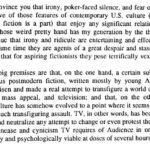The Christian faith, at its heart, is a journey of personal discovery and invitation. It’s a story passed down through generations, person to person, beginning with Jesus himself over two thousand years ago. The encounter between Jesus, Philip, and Nathanael in John 1:43-51 beautifully illustrates this fundamental aspect of Christianity. This passage isn’t just a historical account; it’s a timeless model for how faith is shared and received.
The Gospel of John reveals how Jesus called his first disciples, and the story of Philip and Nathanael is particularly insightful. After Jesus called Philip to follow him, Philip immediately sought out his friend Nathanael. Excitedly, Philip declares, “We have found him of whom Moses in the Law and also the prophets wrote, Jesus of Nazareth, the son of Joseph.” (John 1:45, ESV). Philip’s enthusiasm is palpable. He’s encountered something life-changing and wants to share it.
Nathanael, however, responds with skepticism, a very human reaction. “Can anything good come out of Nazareth?” he questions (John 1:46). Nazareth was a small, seemingly insignificant town. Nathanael’s question reflects a common prejudice and perhaps a reliance on preconceived notions. Instead of arguing or trying to persuade Nathanael with theological reasoning, Philip offers a simple, yet profound invitation: “Come and see” (John 1:46).
This invitation, “Come and see,” is the crux of the passage and a powerful method of evangelism. Philip doesn’t attempt to force belief or overcome Nathanael’s doubts with elaborate arguments. He simply invites him to experience Jesus for himself. This approach acknowledges that encountering Jesus is often more transformative than intellectual assent alone.
When Nathanael accepts Philip’s invitation and meets Jesus, something remarkable happens. Before Nathanael even speaks, Jesus says, “Behold, an Israelite indeed, in whom there is no deceit!” (John 1:47). Nathanael is taken aback. “How do you know me?” he asks (John 1:48). Jesus responds, “Before Philip called you, when you were under the fig tree, I saw you” (John 1:48).
This statement deeply impacts Nathanael. The detail of being “under the fig tree” suggests a private moment, perhaps of prayer or reflection. Jesus’s knowledge of this personal moment convinces Nathanael of Jesus’s extraordinary nature. Nathanael’s response is immediate and declarative: “Rabbi, you are the Son of God! You are the King of Israel!” (John 1:49). This confession is a significant declaration of faith, inspired not by persuasive arguments, but by a personal encounter with Jesus.
The passage highlights several key aspects of faith and discipleship. Firstly, it underscores the personal nature of faith. Nathanael’s journey isn’t second-hand; he needs to “come and see” for himself. Faith isn’t just inherited or passively accepted; it requires a personal encounter with Jesus.
Secondly, it reveals the power of invitation. Philip’s simple invitation, “Come and see,” is more effective than any forceful persuasion. It respects Nathanael’s autonomy and invites him to experience Jesus firsthand. This model is still relevant today. Sharing faith often begins with a simple invitation to experience Jesus in community, through scripture, or in personal reflection.
Thirdly, the story emphasizes the transformative nature of encountering Jesus. Nathanael’s skepticism quickly dissolves upon meeting Jesus. There is something inherently compelling about Jesus’s person and presence. As biblical scholar J.B. Phillips noted, there was a magnetic quality to Jesus that drew people to him. The Gospels are filled with examples of people whose lives were profoundly changed after meeting Jesus – the woman at the well, Zacchaeus, and many others.
Finally, John 1:43-51 illustrates the authority and insight of Jesus. Jesus’s knowledge of Nathanael “under the fig tree” isn’t just a parlor trick. It’s a demonstration of his divine awareness and ability to see into the heart of individuals. This inherent authority, observed throughout the Gospels, is what led people to recognize Jesus as more than just an ordinary man. As observed in the Sermon on the Mount, Jesus taught “as one who had authority, and not as their scribes” (Matthew 7:29).
The story of Philip and Nathanael in John 1:43-51 provides a foundational understanding of how the Christian faith spreads and takes root. It’s a story of personal invitation, encounter, and transformation. Instead of relying on forceful arguments or elaborate presentations, the most effective way to share faith may be the simple invitation: “Come and see.” Discover for yourself the person of Jesus Christ, and like Nathanael, you may find yourself declaring, “You are the Son of God!”

